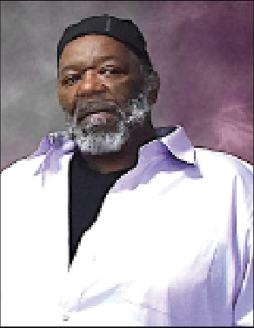Rub-a-dub-dub, washboard into rhythm sections
Published 2:33 am Sunday, May 8, 2011
Washboard Chaz had them rocking early in the Blues Tent at the New Orleans Jazz and Heritage Festival, his fingers rippling over and pounding the old-fashioned washboard that hung from his chest.
Chaz Leary, 61, has been playing the washboard for better than 40 years, adding its snap and scrape to a variety of music, including the blues.
“It’s percussion, just the same as the drum,” he said. “Just a lot easier to carry around.”
Leary, who played the first weekend of the festival, is a purist when it comes to the instrument that has long since left the humble wash tub, liking what he calls a more mellow sound for his music. He always uses the same model from the Columbus Washboard Company in Logan, Ohio, making sure the sound will not vary.
Most of those playing with the Cajun, zydeco and other bands, wear the newer version of the washboard — a specially designed board with metal straps that go over the shoulder.
“It’s nice and comfortable,” said Harold Potier, who had his board made 14 years ago. “And I like the sound it has.”
Potier, 64, a retired welder who is now part of the Joe Hall and the Canecutters band, said he just picked the board up and began practicing.
“You just keep the beat with the accordion and the drums,” he said. “You add another layer of percussion.”
A good washboard player adds more than just percussion, Hall said.
“We always have a washboard,” Hall said. “People like the sound, but they also like to watch the washboard guy.”
Musically, Hall said, the washboard made his music, which he called Creole, separate from zydeco and Cajun, although they all play the same instruments and many of the same songs.
“The washboard helps to keep my sound, my accordion, separate from the others,” he said.
Leary wears two thimbles on each hand, one on his ring finger and one on the middle finger. He orders 200 a year. Most players use either spoons or forks, padding the tines or bowls with duct tape, and rattling the handle over the corrugations. Potier carries a variety, finding that different weights deliver different sounds.
Kenny Champaign, of Lafayette, La., has been making the boards since he was 8 years old. At 50, making them and learning to play one are his fulltime business.
He supplies music stores and sells through his website, and to musicians he knows.
“I make them of stainless steel, on a 100-year-old machine,” Champaign said. “It takes about an hour to make one.”
The ridges are first added to one side of the board, then the other. Then the neck hole is cut out and the shoulder straps added.
Champaign makes them in four sizes — what he calls a baby size, youth, woman and man. They range in price from $40 to $190, although other manufactures sell them for much more.
Potier paid $65 for his board. They can now sell for hundreds of dollars, in part because of the growing popularity.
“I get a lot of questions from young guys these days,” Potier said. “They like that sound.”
And they’re easy to play, said Josie Smith, 27, of Houston, who danced in the crowd strumming her own washboard.
“All you have to have is a sense of rhythm and a sense of humor,” Smith said.
Online:
http://www.washboardchaz.com/
http://zydecoboards.com/
http://columbuswashboard.com/




